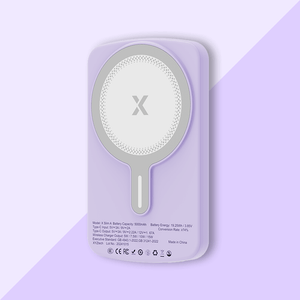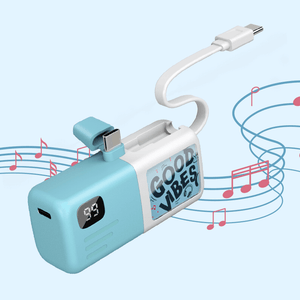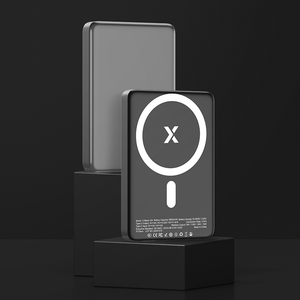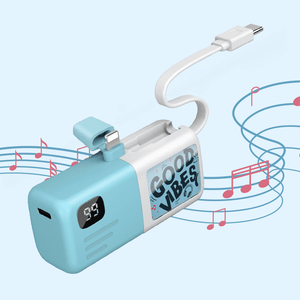Regenerating Batteries: Promising Fix for Power Bank Frustration?

Image via chemeurope
If you’re the kind of person who doesn’t leave the house without a power bank stuffed in your bag, you already know the story: the first few months are bliss. You charge it overnight, it fills up quickly, and your phone practically feels invincible. Fast-forward a year, though, and the romance starts to fade. Suddenly, that “10,000 mAh” pack that once rescued you from low-battery panic on a long trip barely manages to keep your phone alive through a single recharge. It feels like you’re carrying around a brick with diminishing returns.
Battery degradation is one of the most frustrating realities for modern gadget users. No matter how carefully you treat your devices, lithium-ion batteries—the workhorse of today’s portable electronics—simply lose capacity over time. But what if power banks could last longer, maybe even fix themselves in the process? Regenerating batteries, a concept that has been buzzing in labs and industry discussions. Could a self-regenerating battery be the answer to our collective power bank woes?
Let’s break it down.
The Vicious Cycle: Why Power Banks Don’t Age Gracefully
Before we talk about regeneration, we need to face the truth: batteries are imperfect. They’re chemical systems, and like all chemical systems, they degrade with use.
Let’s understand battery degradation further:
- Lithium plating and dendrite growth: With every charge and discharge cycle, microscopic changes take place inside the battery. Lithium ions don’t always behave perfectly, sometimes creating tiny metal deposits (dendrites) that reduce efficiency and can even cause safety issues.
- Electrolyte breakdown: The “liquid” inside the battery gradually loses stability, forming unwanted compounds that trap lithium ions and reduce the battery’s ability to hold a charge.
- Capacity fade: Over time, fewer lithium ions can move back and forth. That’s why your once-reliable power bank struggles after a year or two.
For most of us, this looks like a steady decline: the more you use your power bank, the less dependable it becomes. And unlike your favorite pair of shoes that you can resole, or your car that you can service, today’s lithium-ion batteries are pretty much disposable once their health drops below a certain point.
Self-Regenerating Battery: Rising from the Ashes
When people talk about “regenerating batteries,” they’re usually referring to technologies that allow a battery to restore some of its lost capacity or repair internal damage as it ages. The term isn't one single technology but a broad category of innovations aimed at reversing, or at least slowing down, this degradation process.
Some approaches include:
- Self-healing materials: One of the most promising areas of research is focused on self-healing materials. Imagine a battery that can repair the tiny cracks and imperfections that form on its electrodes during use. Researchers at various institutions are developing polymers and other materials that have this intrinsic ability. These materials would act like a biological system, repairing themselves on a microscopic level, ensuring the battery's internal structure remains intact and efficient for longer.
- Electrolyte additives: Another approach targets the unwanted lithium trapping. Researchers are looking into new electrolyte formulations and electrode designs that prevent lithium ions from getting "stuck." Think of it as creating a better road system for the ions, one with fewer potholes and dead ends. Some concepts involve adding special additives to the electrolyte that can dissolve the trapped lithium, effectively freeing it to participate in the charging and discharging cycle again.
- Pulse charging and reconditioning: Perhaps the most exciting, though still very much in the research phase, is the idea of active regeneration. This is where the battery doesn't just passively heal but actively undergoes a process to restore its capacity. For example, some studies are exploring the use of controlled heat or specific electrical pulses to "melt" away or restructure the SEI layer, effectively clearing out the gunk and restoring the battery's flow. It's like a deep clean for your battery's insides.
While not all of these methods are commercially ready, they’re part of a growing movement to rethink battery lifespan. For power bank users, the dream scenario is clear: a portable charger that keeps most of its original strength not just after 300 cycles (the current norm) but maybe 1,000, 2,000, or more.
What’s the Catch?
Here’s where it gets real: battery regeneration technology sounds fantastic, but like most innovations, the road from lab to your backpack isn’t straightforward.
- Cost: Self-healing materials and advanced electrolytes are still expensive to produce. A regenerating power bank may cost significantly more than standard models, at least initially.
- Durability vs. Performance: Some regeneration methods can extend lifespan but at the cost of lower energy density (meaning a heavier or bulkier power bank for the same capacity).
- Scalability: It’s one thing to demonstrate regeneration in a small coin cell in a lab. It’s another to scale that up to mass-market power banks that survive rough handling, extreme temperatures, and constant travel abuse.
- Uncertainty: Not all regeneration methods work indefinitely. Some extend life by 20–30%, which is helpful but not the miracle solution users might expect.
So, while the concept is promising, don’t expect your next $25 power bank from the airport kiosk to come with self-repairing battery magic just yet.
Where Things Stand Today
Some progress is already happening:
- Smart charging chips: Many high-end power banks now come with chips that regulate charging to minimize stress on the cells. While not “regenerating” in the strictest sense, this is a step toward healthier, longer-lasting batteries.
- Emerging chemistries: Companies are experimenting with lithium-sulfur and solid-state batteries, both of which promise longer lifespans and reduced degradation. Some even have intrinsic regenerative properties.
- Lab breakthroughs: Research teams have demonstrated prototypes of batteries that recover lost capacity after being cycled hundreds of times. While these aren’t commercially available yet, the science is moving quickly.
If history tells us anything, what starts as expensive lab tech often trickles down into consumer products within a decade. Remember when wireless charging or USB-C seemed futuristic? Now they’re everywhere.
The Regenerating Batteries Game Plan: Maximizing Power Bank Life Today
While we eagerly await the mainstream arrival of a self-regenerating battery, the best strategy is to become an expert in preventative care. Think of it as giving your current power bank its own daily dose of regeneration through smart habits. You can’t yet command it to chemically heal itself, but you can dramatically slow down its degradation, preserving its capacity and value until the next generation of technology arrives.
This game plan is all about harnessing the principles of longevity that will one day be built into regenerating batteries, but applying them manually today.
- Avoid the Extremes: The 20-80% "Sweet Spot" - True regenerating batteries of the future might automatically manage their charge state to minimize stress. You can do this manually now. The intense pressure at the top (100%) and bottom (0%) of a charge cycle accelerates the wear and tear that causes capacity loss. By keeping your power bank between 20% and 80% most of the time, you significantly reduce this stress. This isn't always practical for a device designed for full-cycle top-ups, but it’s a great goal for storage. If you’re not heading on a trip, don’t feel compelled to charge it to full; a partial charge is far healthier for a long-term power bank lifespan.
- Be a Thermostat: Heat is the Arch-Nemesis - The sophisticated materials in future regenerating batteries will likely be engineered to withstand thermal damage. For now, you are its thermal guardian. Heat is public enemy number one for lithium-ion cells, speeding up the chemical reactions that lead to permanent capacity loss. Never leave your power bank in a hot car, on a sunny beach towel, or near any heat source. When using it, if it becomes noticeably warm to the touch, unplug it and give it a break. Managing temperature is the single most effective way to mimic the resilient nature of a regenerating battery.
- The "Use It or Lose It" Rule (But Gently) - Unlike the hypothetical self-healing batteries of tomorrow, today's power banks don’t benefit from sitting idle for too long. Lithium-ion batteries prefer gentle activity. If you’re storing a power bank for a month or more (e.g., between seasons), don’t store it fully charged or completely empty. Aim for a 40-60% charge level. This puts the internal chemistry in its most stable, low-stress state, preventing the deep discharge that can permanently damage cells. Every few months, plug it in for a bit to top it back up into that storage sweet spot. This simple routine is a form of external "system check" that keeps it healthy.
- Invest in a Quality Foundation - Future regenerating batteries will have their healing mechanisms built in from the start. Today, you can choose a power bank that has the best foundation for a long life. Cheap, no-name brands often use lower-grade cells that degrade much faster and lack sophisticated internal management systems. A reputable brand invests in better quality cells and includes crucial protection circuitry that prevents overcharging, over-discharging, and overheating. This built-in vigilance is the closest you can get to the automated health monitoring of advanced regenerating batteries, actively safeguarding the cell's integrity with every use.
By adopting these habits, you're not just waiting for the future; you're actively extending the life of your current gear. You're practicing the philosophy of regenerating batteries today, manually doing what technology will one day do automatically. This means less frustration, fewer replacements, and more reliable power for all your adventures.
Final Thoughts
So, are "regenerating batteries" the promising fix for power bank frustration? The answer is a hopeful yes, but it's not a silver bullet that exists today. It's a compelling vision of the future, a collection of cutting-edge technologies that are being developed to fundamentally change how we use and think about batteries.
For now, the best we can do is practice good battery hygiene: avoid extreme temperatures, don't leave your power bank fully charged or fully depleted for long periods, and use a quality charger. These habits can slow down the inevitable decline.
But keep an eye on this space. The next time you're shopping for a power bank and see a new feature advertised as "extended life" or "enhanced durability," you might be looking at the first step towards a truly self-regenerating battery. It's an exciting prospect, one that could finally put an end to our collective power bank frustration.
Frequently Asked Questions
Q: Can regenerating batteries fix a completely “dead” power bank?
Not really. Regeneration techniques can slow degradation or recover some lost capacity, but if a battery has failed outright—like if it can’t hold any charge or has suffered internal damage—it’s beyond saving. Think of regeneration as maintenance, not resurrection.
Q: Will regenerating technology make power banks heavier or bulkier?
Possibly, at least in early versions. Some regeneration methods require extra layers, coatings, or circuitry that add a bit of size and weight. Over time, though, as the technology improves, manufacturers usually find ways to shrink everything back down.
Q: How much longer could a regenerating power bank last compared to a regular one?
It depends on the method used. Some lab tests show 20–30% longer lifespans, while others suggest the potential for doubling or even tripling cycle life. In real-world use, that could mean a power bank that stays reliable for 5–6 years instead of the usual 2–3.









